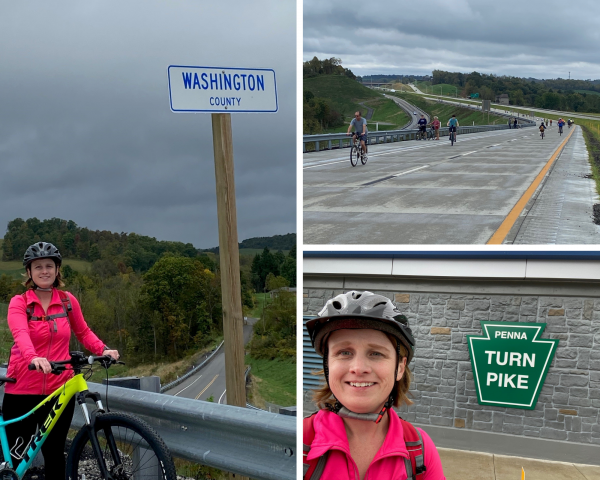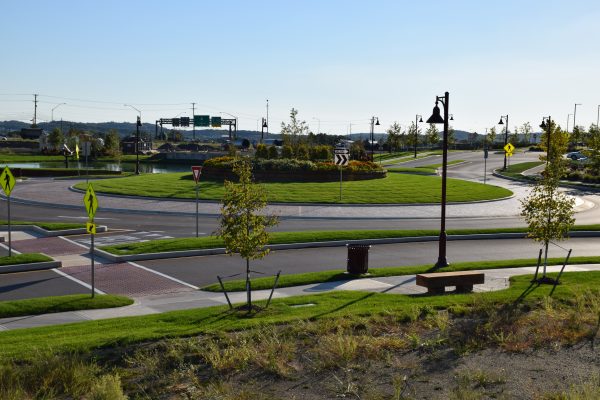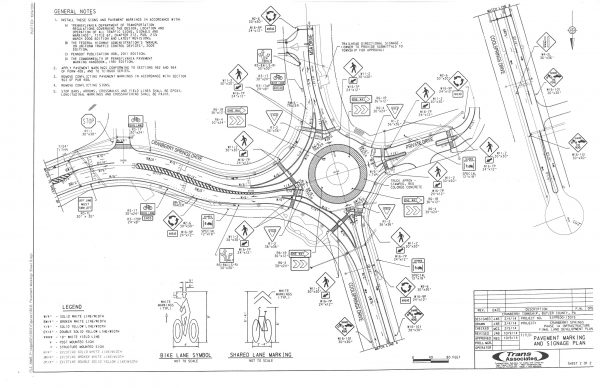The traditional three-segment traffic signal head has been around since 1920. Since its inception, the design of the traffic signal, and its associated equipment has gotten remarkably more advanced, and the technology trend shows promise of continuing. Several technologies have been developed for the purpose of improving traffic signal operation. Some of these technologies include advancements in pedestrian and vehicle detection, transit and emergency vehicle preemption, and logic controllers which continuously optimize traffic flow. Each of these elements must be designed for each intersection or signalized corridor individually, and the best design will vary with field conditions. There is no cookie-cutter solution to traffic engineering!
Vehicle Detection
When considering detection, it is important to consider that there are many detection methods, but none of them are perfect. Each method has strengths and weaknesses. One way to overcome potential shortfalls is to implement two different detection technologies at the same signal, so that they can work in tandem.
The most common detector type which is currently in use is a loop detector, which is simply a loop of wire in the ground that generates an electric pulse from the movement of a vehicle nearby. Loops work well for how simple they are, and the electrical signature picked up can be used to indicate if a vehicle is a car, bus, or truck.
These in-pavement detectors have strengths and weaknesses. For example:
· Susceptible to breaking from pavement shifting.
· Difficult, expensive, and time consuming to repair.
· Accuracy can be depleted by environmental factors such as ground capacitance, nearby electric fields or small vehicles.
· Cannot detect bicycles, certain motorcycles, or pedestrians.
Detection technologies have seen considerable advancements in recent years. It is recommended to consider using radar, video cameras, or infrared imaging as the primary detection method.
Radar, infrared, and video detection can all pick up and classify virtually all vehicle types, including bikes, motorcycles, and pedestrians. As with loops, each of these detectors have strengths and weaknesses. For example:
· Cameras have high fidelity, but can be occluded by lens deposits and bad weather.
· Infrared works in all weather, but can be spoofed by hot spots left by idling vehicles.
· Radar works well in all weather, isn’t temperature dependent, but can be spoofed by erratic movements such as branches and debris in the wind. Also, separate radars must be used for moving and for stopping vehicles and pedestrians.
By combining two of these detector technologies, the strengths of one detector can overcome the weaknesses of the other detector. As with signal timing, the ideal detector types will vary with intersection location and field conditions; however, radar has become the preferred choice by most municipalities and DOT’s.
Vehicle Coordination
When considering signalization at more than one intersection, coordination is required in order to make the signals work in a way that promotes efficient traffic flow. The simplest and most widely used solution is to employ time clocks at each signal with appropriately designed schedules. Due to clock drift and possible hardware faults, a GPS clock should be used so that the signals remain in sync. The signals can also be made to communicate with each other, by means of radio, twisted pair, or fiber optic cables.
Vehicle Coordination technologies have seen considerable advancements in recent years. A more advanced form of signal coordination is beginning to take hold, and it is called Adaptive Signal Control (ASC). ASC is a set of software algorithms, communications protocols, and controller hardware which works together to allow the signals to “learn” traffic patterns in real time, all of the time. The traffic data is transmitted to and collected at a central server, recorded and processed, then turned into instructions which are sent back to the signals, telling them how to handle traffic flow. ASC is a great solution for busy corridors, or roads with highly variable traffic patterns. Several measures of effectiveness (MOEs) are available, which can be used to quantify the benefits of implementing ASC. Such MOEs include reduction in delay, reduction in fuel emissions, reduction in queue length, and smoother progression of traffic. When considering ASC, it is important to also consider the engineering and cost requirements to implement and operate a system. Often times, the long-term benefits exceed the up-front cost.
At Trans Associates, our staff can and will guide you towards the most appropriate solution for your needs. We will also design the signals, and coordinate with DOTs, municipalities, stakeholders, and vendors to ensure a seamless experience from inception to construction, whether you need design of a new isolated signal, or enhancements to an entire signalized corridor.





